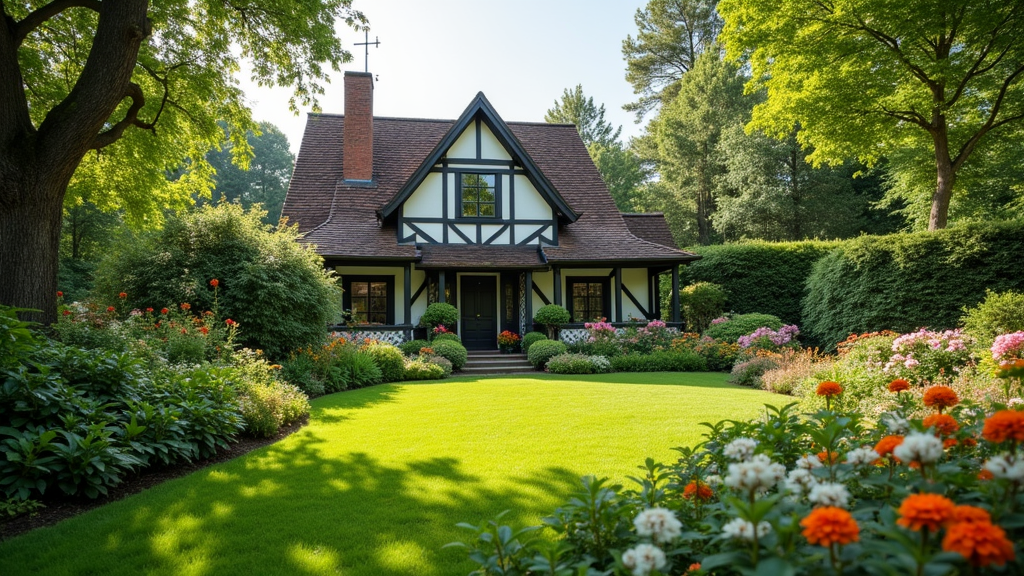Introduction
When we think about landscape design, our minds often drift to lush greenery, vibrant flowers, and sprawling lawns. However, there’s another side to this coin that deserves equal attention: hardscaping. So, what exactly is hardscaping? Simply put, it refers to the non-plant elements of landscape design, such as patios, walkways, retaining walls, and driveways. These elements can drastically enhance the beauty and functionality of outdoor spaces when expertly integrated into the overall landscape design.
In this article, we’ll explore The Impact of Hardscaping on Overall Landscape Design in depth. We’ll discuss https://www.ramirezlandl.com/contact various aspects like its benefits, types of materials used in hardscaping, how it influences aesthetics and functionality, and much more. Stay with us as we delve into this fascinating subject!
Understanding Hardscaping in Landscape Design
What is Hardscaping?
Hardscaping encompasses all the hard elements in a landscape design—everything from stone pathways to wooden decks. Unlike softscape elements (like plants and soil), hardscape provides structure and form to outdoor spaces.
Why is Hardscaping Important?
Hardscaping plays a crucial role in landscape design by providing essential features that enhance usability. It allows for functional outdoor areas where people can gather and relax while elevating the visual appeal of a space.
Types of Hardscape Materials
Natural Stone: Provides a timeless look. Brick Pavers: Great for driveways and patios. Concrete: Versatile for various applications. Wood: Used for decks and fences. Gravel: Excellent for pathways or decorative ground cover.How Does Hardscaping Influence Landscape Design?
Hardscape elements set the stage for softscape features by creating defined spaces within a garden or yard. They guide movement through areas while adding texture and contrast to plant life.
The Benefits of Hardscaping in Landscape Design
1. Enhancing Aesthetics
Hardscape can dramatically change how a landscape looks; it adds dimension and character that would be absent with plants alone.
Visual Appeal
- Creates focal points Adds colors and textures Offers contrasting shapes
2. Improving Functionality
A well-designed hardscape makes outdoor spaces usable year-round.
Usable Spaces
- Patios for dining Walkways for easy navigation Fire pits for gatherings
3. Low Maintenance Requirements
Once installed, most hardscape elements require minimal upkeep compared to gardens.
Easy Care
- No watering needed Reduced weed growth Long-lasting materials
4. Increases Property Value
An attractive hardscape can significantly raise your home’s market value by enhancing curb appeal.
Market Appeal
- Attractive properties sell faster Helps in property appraisal Draws potential buyers
Integrating Hardscaping with Soft Landscaping
Balancing Elements
Achieving harmony between hardscape and softscape is vital for an aesthetically pleasing environment.
Contrasting Features
Mixing solid surfaces with flowing plants creates an engaging visual experience that draws the eye around the space.
Creating Zones Using Hardscape
A creative approach involves using hardscape materials to create distinct zones within your landscape design.
Functional Areas
Dining areas Relaxation spots Play zones for kidsDesigning Landscapes with Purposeful Hardscaping
1. Planning Your Space
Before diving into installation, consider how you intend to use your outdoor space.
Considerations
- Family size Activities you enjoy Climate conditions
2. Choosing the Right Materials
Not all materials are created equal; choosing durable options will ensure longevity.
Material Selection Tips
Choose based on climate Consider maintenance needs Select colors that complement existing featuresSustainable Practices in Hardscaping
Eco-Friendly Materials
In today's world, sustainability is paramount; thus opting for eco-friendly materials can make a big difference.
Examples of Sustainable Choices:
Reclaimed wood Permeable paving stones Recycled concreteWater Management Solutions
Effective drainage systems are essential components of responsible landscaping designs involving hardscape materials.

Techniques:
Rain gardens French drains SwalesThe Impact of Hardscaping on Overall Landscape Design
The integration of hardscaping significantly alters the dynamics of landscape design by providing structure while also enhancing aesthetic appeal through diverse materials and forms—bridging functionality with beauty seamlessly manifests throughout any outdoor area.
FAQs About Hardscaping in Landscape Design
Q1: What is the difference between softscape and hardscape?
A1: Softscape refers to living elements like plants and trees while hardscape involves non-living features like pavements or walls that provide structural support to landscapes.
Q2: How do I choose the right type of patio material?
A2: Consider factors such as durability, maintenance requirements, cost-effectiveness, and how well it complements other elements in your landscape design before making a selection.
Q3: Can I install hardscapes myself?
A3: While some simple projects may be DIY-friendly, complex installations often require professional assistance due to expertise needed for proper drainage systems or intricate designs.
Q4: What are some popular trends in modern hardscaping?
A4: Current trends include incorporating sustainable materials like permeable pavers or integrating fire pits into outdoor living spaces—creating inviting atmospheres year-round!
Q5: How does weather affect my hardscaped features?
A5: Extreme weather conditions can impact durability; hence selecting resilient materials designed against rusting or cracking will ensure long-term reliability despite seasonal changes!
Q6: Is hardscaping expensive?
A6: Costs vary widely based on material choice & complexity but investing wisely often pays dividends through enhanced property value & reduced upkeep over time!
Conclusion
In conclusion, understanding The Impact of Hardscaping on Overall Landscape Design allows homeowners to create functional yet beautiful outdoor environments that cater not only to aesthetic desires but also practical needs! By integrating diverse materials thoughtfully while striking a balance between soft landscapes' organic beauty—and structured forms from their counterparts—homeowners achieve stunning results! Whether you go big with elaborate patios or keep it simple with charming pathways—the key takeaway here is embracing creativity alongside utility ultimately transforms any yard into an inviting oasis perfect for relaxation or entertaining family & friends alike!